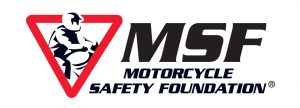AMERICAN MOTORCYCLIST DECEMBER 2018
Ask the MSF: Avoiding deer
Q: What are some strategies for avoiding deer while riding?
A: It can be very difficult to defend oneself against unpredictable hazards. Wild animals can be unpredictable, and the consequences can be disastrous to riders. Deer can weigh up to 400 pounds, elk 800 pounds, and moose 1,500 pounds. The physics of colliding with one of these animals are not in your favor.
The best strategy may be to learn animals’ tendencies and avoid crossing their paths altogether. In your region, there may be times of day when animals are more or less likely to be on the move. There may be geographical features such as water or wildlife corridors that attract animal activity. There may be seasonal behaviors, such as ruts or group/pack movements, that you can be on the lookout for. For example, if a deer jumps across your path, anticipate that its pals will follow.

MSF’s overarching safety strategy, Search-Evaluate-Execute (“SEE”), applies equally to vehicle, surface, and animal hazards that you may encounter. Continuously scan near, far and side-to-side for anything that may intrude into your path. If the road is closely bounded by trees, you will have less of a visual warning that an animal is about to cross. At night, the risks are compounded, since your ability to scan is diminished. Use your high beam (except when following another motorist or when faced with an oncoming motorist). Don’t override your headlight; this happens when your total stopping distance exceeds the distance your light beam shows. Cover your brake controls to reduce reaction time. Ride a little slower than you normally do, as it can give you an edge in seeing trouble and reduce your total stopping distance.
Keep your braking and swerving skills fresh, and practice often (away from traffic, of course). Be sure to keep an escape path open, especially to the sides, so you have a place to go if a deer springs a trap.
